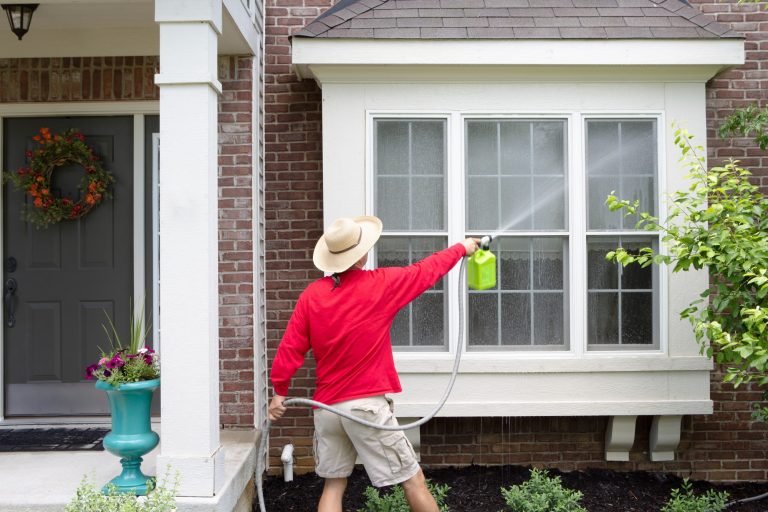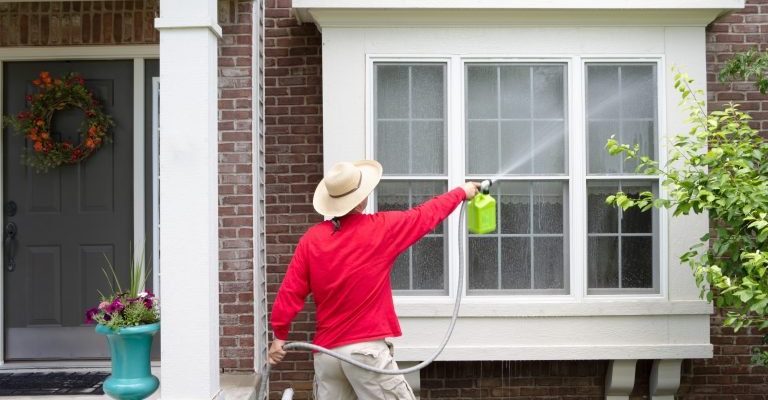
Maybe you’ve wondered why your neighbor’s entryway always looks so polished, or maybe you’re just tired of ugly spots and grime. Learning the right way to clean exterior handlesets isn’t complicated, but it does make a big difference. Let me explain how you can keep your entry hardware looking sharp, whether you’ve got brushed nickel, aged bronze, or a shiny chrome finish.
Why Exterior Handleset Finishes Need Special Care
A lot of people think you can just wipe down an exterior handle with whatever’s under the sink or hit it with a power washer. Honestly, that’s the fastest way to ruin a good finish. Most modern handlesets—especially from brands like Schlage, Baldwin, and Kwikset—are built to last, but their surfaces are surprisingly sensitive. The finish isn’t just about looks; it’s a protective layer that keeps the metal underneath from corroding, tarnishing, or pitting.
If you use harsh chemicals, scrubbers, or DIY “hacks” (like vinegar or bleach), you’ll break down that finish faster than you’d expect. Even a simple product like glass cleaner can actually strip surface coatings and leave behind odd stains. Here’s the critical point: exterior handleset finishes are designed to be tough, but only when they’re cleaned the right way—with gentle, routine care and the right timing.
You might be wondering why it even matters. Well, beyond just looking bad, a damaged finish can let water and air get to the metal beneath. That’s when corrosion, rust, and mechanical issues start, leading to sticky locks or even total failure. Treat the finish well, and you’ll save time, money, and frustration in the long run.
The Right Tools and Materials for Cleaning Handleset Finishes
Before you start scrubbing away, let’s talk about what you actually need. The key is to keep it simple and gentle, always. For most handleset finishes—including satin nickel, polished brass, chrome, or powder-coated black—there’s no magic product or secret trick. What matters more is *what you don’t use*.
- Soft microfiber or cotton cloths: These won’t scratch or leave behind lint.
- Mild soap (like dish soap): Avoid anything with added bleach, ammonia, or abrasives.
- Distilled water: Regular tap water works, but distilled prevents mineral spots, especially on darker finishes.
- Optional: Carnauba wax or a handleset-safe polish for added shine on brass or bronze finishes.
Steer clear of paper towels, scouring pads, or anything gritty. Even a scrubby sponge can leave tiny scratches that dull the finish over time. If you’re dealing with stubborn grime, focus more on patience than pressure—longer soaking and gentle wiping always beats scrubbing.
Step-by-Step: How To Clean Your Exterior Handleset Finish Safely
Here’s a simple routine you can follow every month or whenever your handleset looks grimy. Schlage, Kwikset, and other major brands all recommend pretty much the same approach.
- Pre-wet the surface. Dampen your cloth with warm water and gently wipe away dust or loose dirt. Don’t skip this—scrubbing dirt can scratch the finish.
- Mix a mild soap solution. Add a drop or two of dish soap to a bowl of warm water. Less is more here.
- Wipe the handleset. Using your soapy cloth, gently clean the entire surface—handle, thumb latch, lock, and trim. Get into crevices, but don’t soak the lock itself.
- Rinse with clean water. Any soap residue left behind can attract dirt or cause streaks, so use a second clean, wet cloth to wipe it all down.
- Dry thoroughly. Use a dry microfiber cloth and buff the surface until it’s dry. This prevents water spots and helps the finish shine.
This is honestly all most handlesets need. No vinegar, no spray cleaners, no fancy polishes (unless your manufacturer recommends them). If you want to go the extra mile, a little carnauba wax buffed onto a solid brass or bronze handleset will add a subtle luster and extra protection.
Common Cleaning Mistakes That Damage Handleset Finishes
Let’s be real: it’s easy to fall for cleaning shortcuts—especially if you’re in a hurry or fighting tough grime. Here are a few common mistakes that can actually *ruin* exterior handleset finishes faster than you’d think:
- Using abrasive cleaners or pads: Anything gritty or rough can scratch the finish right off. Even “magic erasers” are a no-go.
- Spraying cleaners directly on the lock: Liquids can seep inside and cause corrosion or battery issues (on smart handlesets).
- Leaving soap or water on the finish: This can lead to dull spots, mineral buildup, or, worst case, corrosion underneath.
- Skipping regular cleanings: If grime gets caked on, you’ll be tempted to scrub harder, which just speeds up wear and tear.
Let me just say, I’ve seen enough ruined handlesets to know the pain. You’re better off sticking to gentle, regular cleanings than trying to fix damage down the line.
How Finish Type Changes Your Care Routine
Not all handleset finishes are created equal, and each type needs a little different TLC. For example, if you have an antique brass finish from Baldwin, it’ll actually get better with age, building up a natural patina. Meanwhile, polished chrome and satin nickel show water marks and fingerprints more easily, so they need more frequent, gentle buffing.
- Living finishes (like oil-rubbed bronze): These are meant to change and age naturally, so avoid polishing or waxing. Just gentle soap and water, nothing more.
- Physical vapor deposition (PVD) finishes: These are ultra-durable but still need gentle soaps, no harsh chemicals.
- Powder-coated finishes: Like those on modern matte black handlesets, they’re tough but can get chalky if cleaned with abrasive stuff. Stick to soft cloths and gentle detergent.
If you’re unsure what kind you have, check the manufacturer’s website for care tips. Schlage, Kwikset, and Baldwin all have finish-specific guides, and honestly, checking saves a lot of trouble.
What To Do About Stubborn Spots or Tarnish
Sometimes, despite your best efforts, you’ll see things like white spots, faint rust, or strange discoloration on your handleset. It’s tempting to reach for the strongest cleaner you can find, but resist the urge. Here’s what you should do instead:
- For mineral spots: Try buffing gently with a cloth dampened with distilled water. If that’s not enough, use a 1:1 solution of distilled water and rubbing alcohol, but test on a hidden spot first.
- For early tarnish: Many “living” finishes are supposed to darken or patina over time—that’s not a problem. If you see greenish or blue spots, that’s probably copper oxidation and can be gently wiped away with a soft cloth and water. Don’t polish unless the finish is solid brass and uncoated.
- For sticky residue: Warm, soapy water and patience. Let it soak, then gently rub it off. If it’s something like tree sap, a bit of olive oil on a cloth works wonders (then wash with soap after).
The most important part? Never use steel wool or chemical metal polish on coated or painted finishes. You’ll wear off the protection and create more problems than you solve.
Protecting and Maintaining Handleset Finishes Year-Round
It’s not just about cleaning—protecting your handleset finish is a year-round job, especially if you live in a humid or coastal climate. Sun, salt, and rain all take their toll, so even the best routine needs a little backup.
- Routine checks: Every season, look for early signs of wear or pitting. Catching issues early means easier fixes.
- Apply wax on solid brass or bronze: A tiny layer of carnauba wax every six months can keep water and grime from sticking. Don’t use on satin or powder-coated finishes, though.
- Keep lock mechanism dry: If you used too much water or accidentally sprayed the lock, dry it immediately to prevent internal corrosion or code/device issues with smart handles.
If your handleset is smart or electronic, battery health is just as important as finish health. Avoid getting the keypad or battery compartment wet, and if you spot any corrosion, troubleshoot and replace batteries ASAP.
Alternatives: When To Restore, Replace, or Upgrade Handleset Finishes
Sometimes, no matter how carefully you clean, the finish just won’t come back. You might be wondering: should I restore it, replace it, or just upgrade to something new? Here are some ways to decide:
- Light cosmetic wear? Try a manufacturer-recommended polish or wax. Sometimes this is all it takes for a quick glow-up.
- Deep scratches or corrosion? Sadly, these usually mean the finish is gone for good. Some brands offer refinishing kits, but results can be hit-or-miss.
- Ready for an upgrade? If you’re seeing constant wear or stuck with an old device, switching to a new Schlage, Kwikset, or Baldwin handleset with PVD finish can make a huge difference—and offer smarter code or keyless options, too.
If your entry hardware is older than you are, you might find a universal handleset replacement that fits right in. Pairing a fresh finish with a clean door can totally change the look of your home.
Treat your exterior handleset like the jewelry of your home—routine, gentle care makes it last longer and look better every single day.
Cleaning Handleset Finishes: Small Effort, Big Impact
The truth is, keeping your exterior handleset finish clean isn’t just about curb appeal—it’s about protecting an investment and making your home feel welcoming. By skipping harsh cleaners and sticking to a gentle, routine approach, you’ll avoid the classic mistakes that ruin the look and lifespan of your hardware.
Whether you’ve got a classic Baldwin brass, a modern Schlage keypad, or anything in between, the right cleaning habits go a long way. A few minutes each month with a soft cloth and mild soap (plus the occasional finish-safe wax) keeps everything running smoothly—no more embarrassing smudges when guests reach for the door.
So next time you’re wiping away the week’s fingerprints, remember: those small steps add up. Your handleset will thank you by looking good for years to come.
